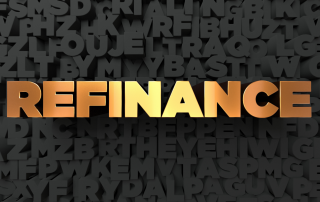USDA: What does it stand for and how can it help you to become a homeowner?
USDA loans were started in the 1990’s by the U.S. Department of Agriculture.
The loan program is gear towards rural development and making homeownership a reality for low and moderate income families living in rural areas.
“Providing affordable homeownership opportunities promotes prosperity, which in turn creates thriving communities and improves the quality of life in rural areas,” this is what the USDA has on its website as to why they have the back these loans.
Unlike FHA and conventional loans, USDA loans have property and income restrictions on top of the credit score requirements when it comes to being eligible for the program.
The good news is that the property restrictions are easy to qualify for as 97 percent of the United States is USDA eligible.
If you are unsure of the property you are looking at is USDA approved, visit the USDA’s website at https://eligibility.sc.egov.usda.gov/eligibility/welcomeAction.do. Chose the Single Family Housing Guaranteed link just above the green bar that says eligibility. Then, click on property eligibility, enter the address and it will tell you if the property is good or not.
The income restrictions are based on the county that the property is in. The income restriction is just a matter of not making too much money. Also, the income is calculated based on the entire household whether a person is on the loan or not. Check the USDA’s website for the different income limits for all over the United States.
USDA loans don’t require a down payment, so the entire purchase price can be 100 percent financed. However, you can still receive seller’s assist, which can lower the loan amount. You are eligible for up to 6% seller’s assist of the purchase price.
Another benefit with a USDA loan is if the seller’s assist doesn’t cover all the closing costs, you can finance closings cost into the loan. For this to happen, the property would have to appraise for a higher value than the purchase price agreed on.
Much like FHA loans, USDA loans require mortgage insurance and an upfront funding fee. The mortgage insurance also stays on for the life of the loan unless you refinance.
As of October 1, 2016, the USDA dropped the amounts of the mortgage insurance and the funding fee. The mortgage insurance went from 0.50 percent to 0.35 percent. The funding fee went from 1.5 percent to 1 percent.
For example, the upfront funding fee on a $100,000 loan would be $1,000 with a mortgage insurance premium of $350. Now the $1,000 fee is a one-time fee. The $350 premium is spread out over the 12 months so the monthly payment would be just under $30.
Now that you’ve learned the ins and out of a USDA loan, make sure to contact a mortgage professional to see if the USDA loan is exactly right for you.
Mortgage Consultation Today!
Categories
- Credit (4)
- FHA Loans (3)
- Finances (3)
- First Time Home Buyers (6)
- Grab Bag (7)
- Home Technology (1)
- Homebuying Tips (17)
- Inspiration (1)
- Insurance (3)
- Interest Rates (3)
- Loan Process (1)
- Mortgage Financing (14)
- Motivation (1)
- News (1)
- Press Release (8)
- Renovation (2)
- Self Employed (1)
- Tips & tricks (1)
- Uncategorized (134)
- USDA Loans (1)
- VA Loans (2)




